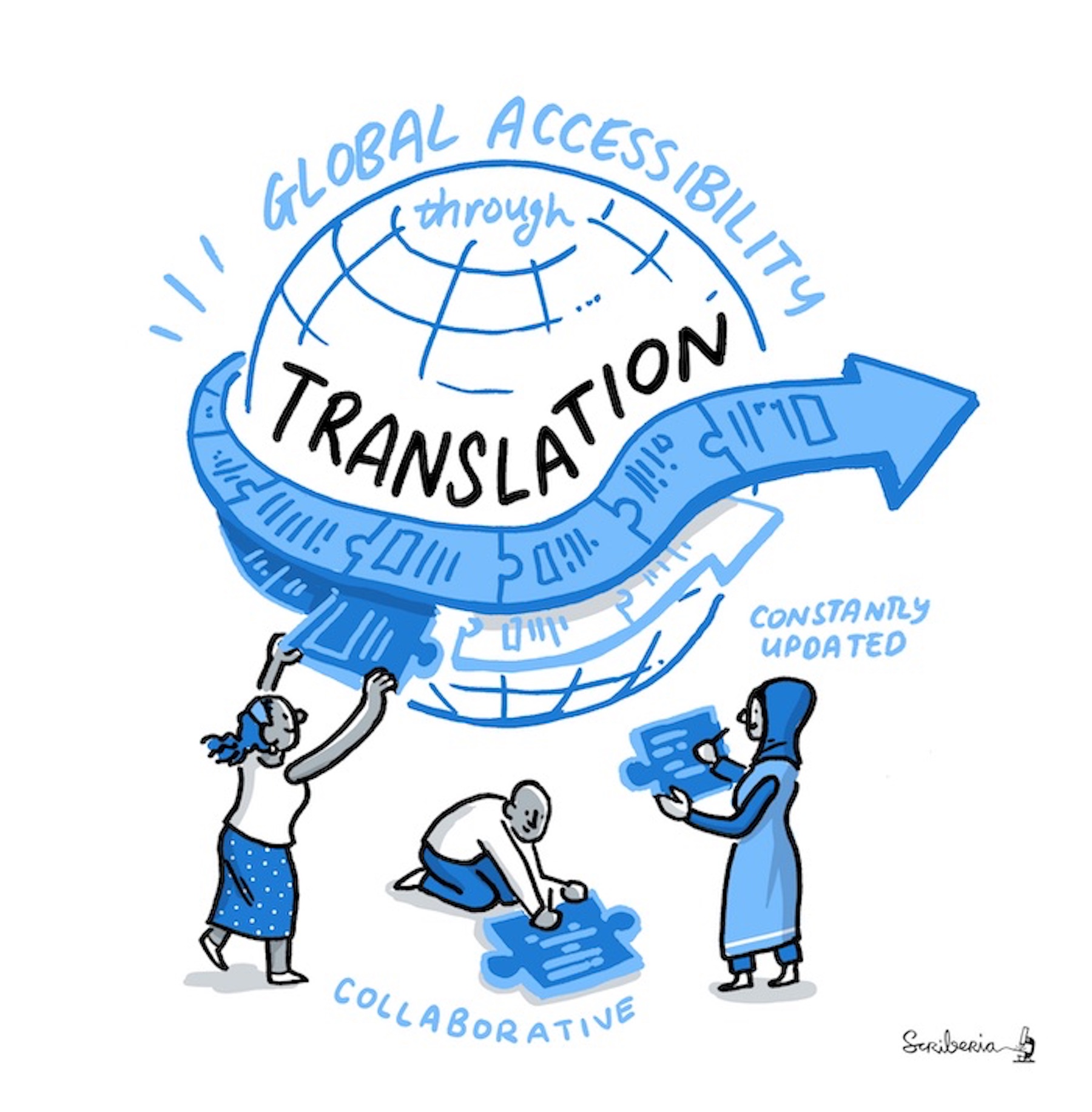Translating The Turing Way
Contents
Translating The Turing Way¶
Prerequisites¶
There are no prerequisites for this chapter and no knowledge in GitHub or programming is assumed.
Summary¶
This chapter covers the motivation for translating The Turing Way to other languages, some technical aspects about localisation and internationalisation, and the workflows to start a new language translation or contributing to existing ones.

Fig. 117 Illustration of translation as a way to reach global accessibility. The Turing Way project illustration by Scriberia. Used under a CC-BY 4.0 licence. DOI: 10.5281/zenodo.3332807¶
Motivation¶
Translation is a key step for internationalisation of The Turing Way and any efforts in this regard are really welcome. Having translated versions of The Turing Way can open the channels for communicating between communities of practice in several languages. Translation is part of community building!
Potential translators are members of The Turing Way community who would like to use the materials for teaching and communication and new members that are not yet part of The Turing Way community but can contribute.
Remember
You do not need to be fluent in English to contribute to the translations, you only need to speak your own language.
The workflows for translation can become confusing at some times and many translation efforts go unfinished for many reasons. Our aim is to provide clear documentation so any potential contributor is able to participate.
In the next few pages, you will learn how open source projects are translated uisng translation management system (TMS) and how you can get started with translating The Turing Way using Crowdin, a type of TMS. Any new member of the community should be able to step in, enter in touch with other members of the translation teams for their languages, and start contributing with translations, proofreading, and documentation.
